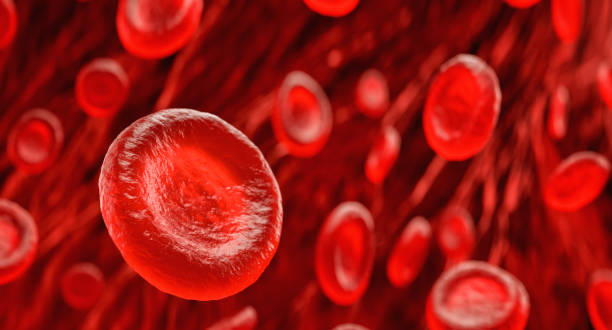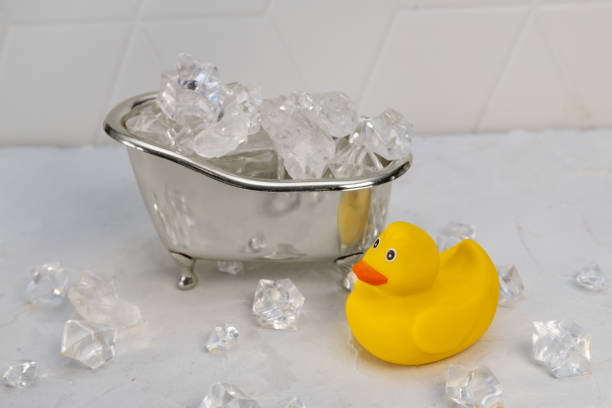Fitness Myths
What Does Ice Bath Stimulate
Enter the world of ice baths to discover the secrets of improved healing and invigoration. We regularly hear about sportsmen and celebrities taking ice baths, but what exactly does an ice bath do? In this article, we will look at the science underlying this chilling procedure as well as the benefits it provides.
The Science Behind Ice Bath Therapy
Ice baths, also known as cold water immersion therapy, entail immersing the body in ice-cold water for a set amount of time. This cold exposure causes a number of physiological responses in the body. Vasoconstriction is a crucial response in which blood arteries contract to preserve heat and reroute blood flow to critical organs. This procedure, as well as the following rewarming, promotes circulation and eliminates waste materials from the muscles.
The ice bath’s frigid temperature causes blood vessels at the skin’s surface to constrict, decreasing blood flow to the extremities and redirecting it to the core. This vasoconstriction aids in heat conservation and maintaining the body’s internal temperature. When the body is withdrawn from the ice bath and begins to thaw up, the blood vessels dilate again, increasing blood flow and circulation throughout the body.
It has been demonstrated that ice bath therapy increases the production of specific hormones in the body, such as adrenaline and endorphins. These hormones can help with pain relief and mood enhancement, resulting in a sensation of vitality and well-being. Furthermore, the freezing temperature numbs nerve endings, offering brief pain and discomfort alleviation.

Benefits of Ice Bath Therapy
Ice bath therapy has numerous advantages for both physical recovery and mental well-being. Let’s look at some of the main benefits of adopting ice baths into your routine:
Muscle Recovery
One of the key advantages of ice bath therapy is that it can help with muscle recovery. Muscles can become inflamed and injured after a strenuous workout or physical activity. Ice baths aid in the reduction of inflammation by restricting blood vessels, limiting the production of inflammatory chemicals. The cool temperature also reduces metabolic activity in the muscles, lowering waste product formation and encouraging speedier recovery.
When immersed in ice-cold water, the cold temperature causes blood vessels to constrict, limiting blood flow to the muscles and reducing inflammation. As the body warms up after the ice bath, the blood vessels dilate again, allowing for enhanced blood flow and oxygen and nutrient delivery to the muscles. This increased circulation aids in the removal of waste products such as lactic acid, which can accumulate during exercise and lead to muscular discomfort.
Inflammation Reduction
Inflammation is a normal reaction to injury or strenuous physical activity. While inflammation is necessary for healing, excessive or continuous inflammation can impede recovery and lead to chronic discomfort. Ice bath therapy reduces inflammation by restricting blood arteries and decreasing inflammatory chemical release.
Cold water immersion can also help reduce the production of pro-inflammatory cytokines, which are immune-related proteins. Ice baths can help manage inflammation and promote speedier recovery by decreasing the release of these cytokines.

Improved Circulation
By constricting and then dilating blood arteries, ice bath therapy increases circulation. This process, referred to as vasoconstriction and vasodilation, aids in the improvement of blood flow throughout the body. Ice baths improve the delivery of oxygen and nutrients to weary muscles by boosting circulation, facilitating speedier recovery and minimizing waste product buildup.
Cold water immersion also activates the lymphatic system, which is in charge of eliminating waste and toxins from the body. The lymphatic system circulates lymph fluid through muscular contractions, and the cool temperature of the ice bath can aid in this process. Ice baths aid in detoxifying and promote general well-being by boosting lymphatic circulation.
Mental Health Benefits
Ice baths can provide considerable mental health advantages in addition to physical recuperation. The freezing temperature causes the production of adrenaline and endorphins, which are hormones that increase mood and reduce stress. Endorphins, in particular, are regarded as natural pain relievers and mood boosters, causing euphoria and a sensation of well-being.
Ice bath therapy can also be used to improve mental resiliency. Immersion in freezing water can assist create mental toughness, discipline, and the ability to endure adversity. Individuals can gain a higher sense of mental strength and resilience by pushing through the discomfort, which can extend into other areas of life.

How to Properly Perform an Ice Bath
To ensure safety and optimize benefits, an ice bath must be performed with proper preparation and technique. Here’s a step-by-step instruction to performing it correctly:
- Fill a bathtub or other big container halfway with cold water. To attain the correct temperature, add ice cubes or use cold water from the faucet. A temperature of 50 to 59 degrees Fahrenheit (10 to 15 degrees Celsius) is ideal.
- Using a thermometer, check the water temperature to ensure it is within the specified range. Extreme cold temperatures must be avoided since they might induce tissue damage or hypothermia.
- Immerse your entire body in the ice-cold water, beginning with your legs and working your way up. To help manage your body’s response to the cold, take slow, deep breaths.
- Continue to soak in the ice bath for 10 to 15 minutes. To avoid overexposure to the cold, do not exceed this time limit.
- Exit the ice bath slowly after the suggested period and let your body to warm up naturally. You can speed up the rewarming process by wrapping yourself in a warm towel or blanket.
Safety Precautions and Considerations for Ice Bath Therapy
While ice bath therapy has various advantages, it is critical to emphasize safety and take specific precautions. Here are some safety precautions:
- Before entering the ice bath, always test the water temperature. Using a thermometer, check that the water temperature is between 50 and 59 degrees Fahrenheit (10 and 15 degrees Celsius).
- To avoid tissue damage or hypothermia, avoid extended exposure to excessively cold temperatures. It is critical to stick to the prescribed ice bath length of 10 to 15 minutes.
- If you have any pre-existing medical disorders, such as cardiovascular disease, asthma, or Raynaud’s disease, you should check with a doctor before starting ice bath therapy. They can advise you on whether it is safe for you and recommend any changes or alternatives.
- If you feel significant discomfort, dizziness, or any other troubling symptoms while taking an ice bath, get out of the water right away and get medical care if necessary.
- Introduce ice bath therapy into your schedule gradually to allow your body to adjust to the cool temperature. Begin with shorter durations and progressively increase as you gain confidence.
- It’s critical to listen to your body and avoid pushing yourself too far. It’s fine to quit the ice bath session early if you’re feeling too chilly or uncomfortable.
- It is excellent to engage in mild physical exercise or gentle stretching after an ice bath to increase blood flow and aid in the rewarming process.
Conclusion
Using ice bath therapy has a wide range of advantages, including the acceleration of muscle healing and the enhancement of mental fortitude. My physical performance and overall well-being can be improved by doing it because it increases circulation, decreases inflammation, and encourages the production of hormones that boost mood.
Nevertheless, it is essential for me to approach ice bath therapy with prudence and to put safety at the forefront of my priorities. In order to ensure a safe and effective experience, I will follow the appropriate procedures, pay attention to my body, and seek the advice of a healthcare professional if circumstances warrant it.


